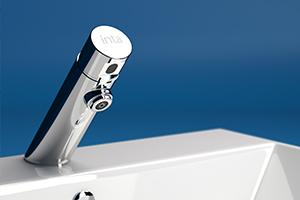An outbreak of Legionnaires disease in the West Midlands has prompted a plumbing equipment manufacturer Intatec to remind facilities managers that…
Legionella, the care home menace – a coroner’s perspective
Coroner Nicholas Rheinberg writes for Care & Nursing Essentials magazine about the cases he has experienced where Legionella caused the deaths of care home residents, and details his recommendations on how to reduce risks…
Should any of us have cause to consider the phenomenon of Legionnaires’ Disease we may possibly think of exotic locations abroad rather than anything that we might encounter locally. The very title conjures up pictures of desert scenes, perhaps with the odd palm tree thrown in for good measure. It may be only a few of us who associate the disease with an otherwise clean, well-run care home, nursing home or hospital. However, these are just the places where without proper precautions the legionella bacteria may thrive.
“The bacterium Legionella  pneumophila and related bacteria are common in natural water sources such as rivers, lakes and reservoirs, but usually in low numbers. They may also be found in purpose-built water systems such as cooling towers, evaporative condensers, hot and cold water systems and spa pools.”
pneumophila and related bacteria are common in natural water sources such as rivers, lakes and reservoirs, but usually in low numbers. They may also be found in purpose-built water systems such as cooling towers, evaporative condensers, hot and cold water systems and spa pools.”
Alarmingly, a mains water supply may also contain legionella bacteria but whether or not this is so, any water supply may become contaminated with the bacteria. Once colonised within a water system, the bacteria will multiply at temperatures ranging from 20 to 45 degrees centigrade. It does not take a genius to realise that designing a water system to dispense water at 38 degrees centigrade so as not to scald a care home resident creates the ideal temperature to allow legionella to multiply. TMVs (thermostatic mixing valves) unless regularly cleaned and treated may be found to house colonies of legionella.
The disease is contracted by breathing in droplets of water contaminated with Legionella. An aerosol effect is created when, for instance, a shower is run or even a tap turned on, allowing an individual in close contact with the water spray to inhale the bacteria. Certain individuals are more susceptible to the disease than others. The elderly, those with a compromised respiratory system or immune system are particularly at risk – in other words the typical resident of a care or nursing home.
Unfortunately, the water systems in most care and nursing homes are rarely designed with legionella control and prevention in mind. Typically long lines of hot and cold water piping will be laid out in parallel with the inevitable result that hot water pipes are cooled by the cold water pipes and cold water pipes are heated by the hot water pipes rendering both liable to achieve temperatures at some point in the run within the 20 to 45 degree range.
Homes espousing green credentials may use solar panels to pre-heat water but the resulting reservoir of water may well be maintained within the critical temperature range. Allowing water to stagnate creates a particular danger and so a room that is kept empty for any length of time, a toilet that is not regularly flushed or a shower that is used only occasionally may allow legionella to breed at dangerous levels.
Reducing the risk of Legionella
During my time as a coroner, I have had the sad duty of holding inquests into the deaths of individuals who have died of Legionnaires’ disease in what up to the time of disaster appeared to be an entirely safe domestic setting.
And so what must you do as an owner or manager of a home? The HSE provides a wealth of practical advice, including the need to carry out risk assessments ensuring that as far as possible the risk is properly monitored and managed. Temperature monitoring is especially important. Legionella is dormant at temperatures under 20 degrees and is killed at temperatures over 60 degrees. If there is a suspicion that legionella may be present it may be wise to have water samples tested.
This is an area where specialist input has the potential to save lives. There are many companies offering advice and assistance in relation to legionella prevention and control and arranging for such a company to inspect a home’s water system and training staff may prevent disaster and avoid the ordeal of the scrutiny of a coroner’s court and the possibility of prosecution by the Care Quality Commission to say nothing of the knowledge that your lack of appropriate precautions may have led to the death of someone in your care.
by Nicholas Rheinberg, LL.B, LL.M, M.A, Dip Crim (cantab), Coroner





